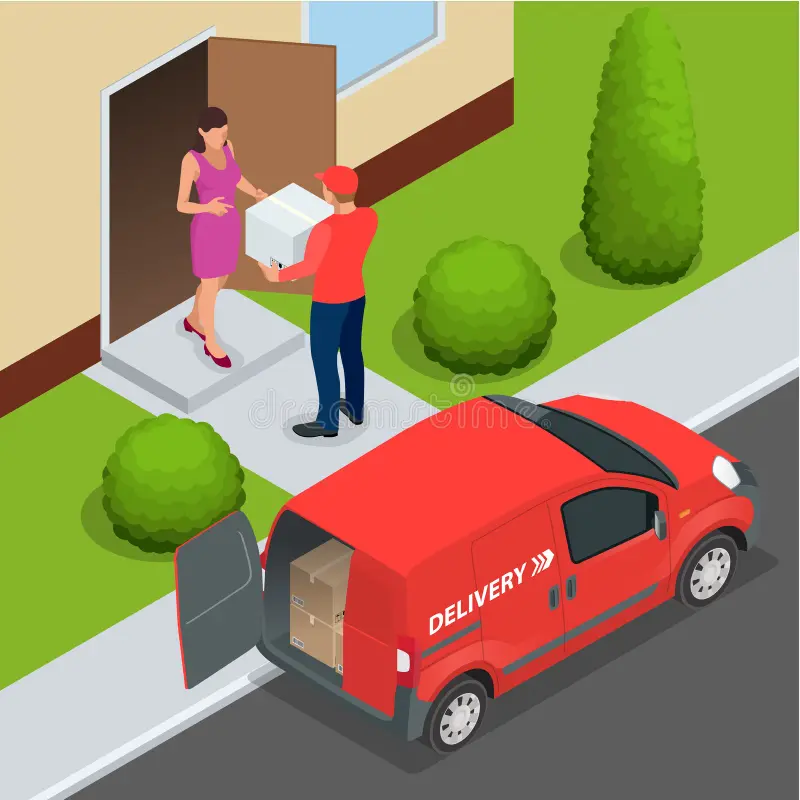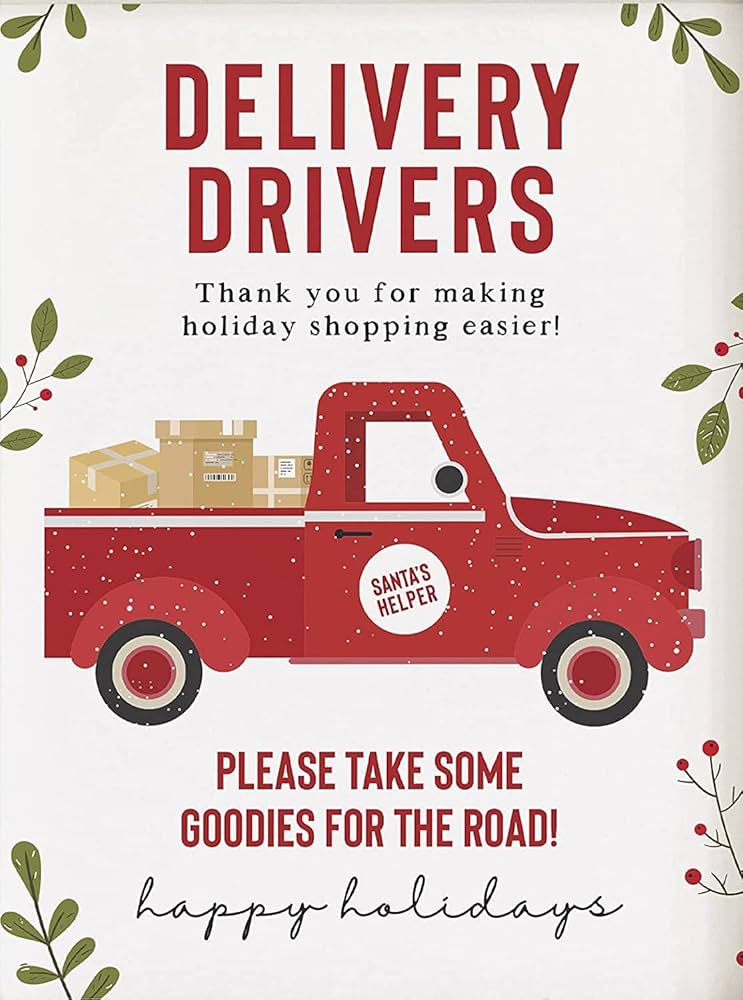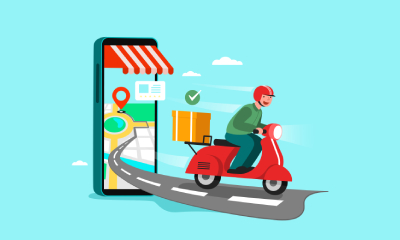The Future of Home Delivery Drivers 2025
Introduction: The Growing Importance of Home Delivery Drivers
The demand for home delivery drivers has skyrocketed in recent years, fueled by the rapid growth of e-commerce, food delivery services, and consumer expectations for fast, reliable shipping. In 2025, this profession continues to evolve, integrating advanced technologies like electric vehicles (EVs), AI-powered route optimization, and real-time tracking to enhance efficiency and customer satisfaction
Whether delivering groceries, packages, or meals, home delivery drivers are now at the forefront of the logistics industry. This article explores the latest trends, essential skills, challenges, and opportunities for aspiring and current drivers in this dynamic field.

Key Trends Shaping Home Delivery Drivers in 2025
1. Adoption of Electric Vehicles (EVs) for Sustainable Deliveries
With rising fuel costs and environmental concerns, many companies are transitioning to electric delivery fleets. EVs reduce operational costs and carbon footprints, making them ideal for urban deliveries. By 2030, an estimated 7.2 million delivery vehicles will be electric, marking a 36% increase from 2019
Why It Matters for Drivers:
- Lower fuel and maintenance expenses.
- Quieter, smoother driving experience.
- Government incentives for EV adoption.
2. Advanced Route Optimization for Efficiency
Gone are the days of manual route planning. Modern home delivery drivers rely on AI-powered software like EasyRoutes and Upper Route Planner to:
- Avoid traffic congestion.
- Reduce idle time and fuel consumption.
- Increase daily delivery capacity by up to 20%
3. Real-Time Delivery Tracking & Customer Expectations
Customers now demand live updates on their orders. Platforms offering real-time GPS tracking, estimated arrival times, and delivery confirmations enhance transparency and trust. Studies show 93% of online shoppers want proactive shipment updates
4. Rise of Localized Warehousing for Faster Deliveries
To cut delivery times, companies are using micro-fulfillment centers closer to customers. This means:
- Fewer long-distance trips.
- More deliveries per shift.
- Reduced fuel costs and emissions
5. Gig Economy Growth & Flexible Work Opportunities
Platforms like DoorDash, Uber Eats, and Instacart allow drivers to work independently, choosing their hours. However, competition is fierce—experienced drivers maximize earnings by working peak hours (evenings, weekends, bad weather) when demand surges
Essential Skills for Home Delivery Drivers in 2025
To thrive in this competitive field, drivers must develop a mix of technical, customer service, and logistical skills:
1. Safe & Efficient Driving
- Clean driving record and defensive driving techniques.
- Familiarity with GPS navigation (Google Maps, Waze).
- Ability to handle different vehicles (EVs, bikes, scooters)
2. Exceptional Customer Service
- Professional communication with customers.
- Handling complaints and special requests (e.g., “leave at door” instructions).
- Friendly demeanor to encourage tips and repeat business
3. Time Management & Organization
- Prioritizing urgent deliveries (e.g., perishable groceries).
- Managing multiple orders efficiently.
- Keeping delivery records and paperwork organized
4. Basic Vehicle Maintenance
- Checking tire pressure, oil levels, and brakes.
- Troubleshooting minor issues (flat tires, battery problems).
- Scheduling regular maintenance to avoid breakdowns
5. Tech-Savviness
- Using delivery apps (DoorDash, Amazon Flex).
- Scanning barcodes and digital signatures.
- Updating delivery statuses in real-time
Challenges Faced by Home Delivery Drivers
While the job offers flexibility, drivers encounter several hurdles:
1. Wear & Tear on Personal Vehicles
Independent contractors (e.g., Uber Eats drivers) cover their own fuel, insurance, and repairs. Some report spending $3,500+ on transmission replacements due to high mileage
2. Safety Risks
- Navigating heavy traffic and poor weather.
- Potential theft or unsafe delivery locations.
- Fatigue from long shifts
3. Income Volatility in the Gig Economy
Earnings fluctuate based on demand, tips, and competition. Drivers in oversaturated markets may struggle to secure enough orders

How to Start a Career as a Home Delivery Driver
1. Meet Basic Requirements
- Age: Most companies require drivers to be 18+ (some, like Amazon, require 21+).
- License: A valid driver’s license (CDL for larger vehicles).
- Vehicle: A reliable car, bike, or scooter (some companies provide rentals)
2. Choose a Delivery Platform
Popular options include:
- Food Delivery: DoorDash, Uber Eats, Grubhub.
- Parcel Delivery: Amazon Flex, UPS, FedEx.
- Grocery Delivery: Instacart, Shipt.
3. Optimize Earnings
- Work peak hours (lunch, dinner, weekends).
- Use multiple apps to maximize order volume.
- Maintain a high customer rating for better order priority
The Future of Home Delivery Driving
As automation and drones enter the logistics space, home delivery drivers will remain essential for last-mile deliveries. Key future developments include:
- Autonomous delivery vehicles (with human oversight).
- Drone deliveries for remote areas.
- More eco-friendly policies (e.g., bike couriers in cities)
Conclusion: Is Becoming a Home Delivery Driver Worth It in 2025?
For those seeking flexibility, independence, and steady income, home delivery driving offers a viable career path. While challenges like vehicle maintenance and gig economy competition exist, drivers who leverage technology, customer service skills, and peak-hour strategies can thrive.
As e-commerce and on-demand services grow, the demand for skilled home delivery drivers will only increase—making this an exciting time to join the industry.
External Resources for Aspiring Drivers:
- DoorDash Driver Requirements
- Amazon Flex Delivery Opportunities
- UPS Driver Careers
- https://sjxsm.shop/driver-saudi-jobsyour-ultimate-guide-to-driving/
By staying updated on industry trends and continuously improving skills, home delivery drivers can secure a rewarding and sustainable career in 2025 and beyond
Challenges Facing Delivery Drivers & How to Overcome Them
| Challenge | Solution |
|---|---|
| High Fuel & Maintenance Costs | Switch to an EV or hybrid vehicle; use gas rewards apps. |
| Safety Risks (Theft, Accidents) | Install dash cams, avoid high-crime areas at night. |
| Unpredictable Gig Economy Pay | Diversify apps (drive for Amazon Flex + Uber Eats). |
| Physical Fatigue & Long Hours | Take breaks, stretch, and stay hydrated. |
📌 Resource: The IRS allows a $0.67/mile tax deduction for delivery drivers – track trips with Everlance or Stride .
How to Start a Lucrative Delivery Driver Career
Step 1: Meet Basic Requirements
- Age: 18+ (21+ for Amazon Flex, UPS).
- License: Valid driver’s license (CDL for box trucks).
- Vehicle: Reliable car, scooter, or e-bike (varies by platform).
Step 2: Apply to Top Delivery Companies
| Company | Pay Range | Vehicle Requirements | Sign-Up Link |
|---|---|---|---|
| Amazon Flex | $18–$25/hr | Mid-size sedan or larger | Apply Here |
| Instacart | $15–$30/hr | Any car (groceries) | Apply Here |
| UPS Package Delivery | $21–$30/hr | Company-provided truck | Apply Here |
Step 3: Maximize Earnings
- Work Surge Hours (5–9 PM, weekends, holidays).
- Stack Orders (run DoorDash + Instacart simultaneously).
- Maintain a 4.8+ Star Rating (better order priority).

